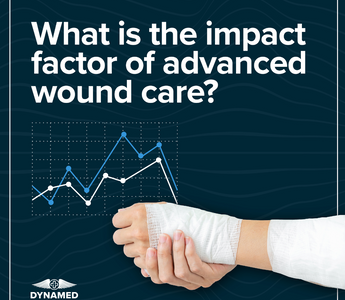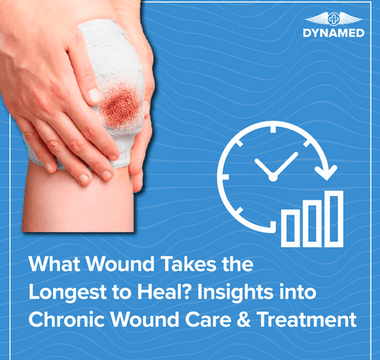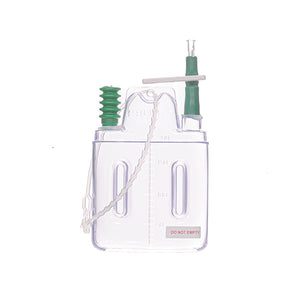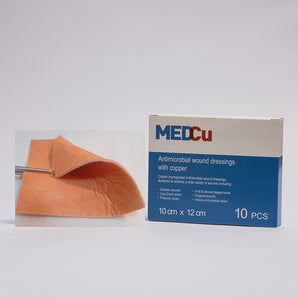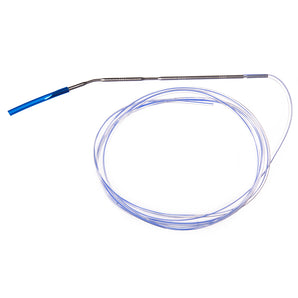Advanced wound care plays a critical role in addressing wounds that standard treatments can't heal effectively. These wounds, often linked to chronic conditions, surgeries, or injuries, require specialised approaches to prevent complications like infection and delayed recovery. By focusing on tailored solutions, advanced wound care significantly improves healing outcomes and supports overall patient well-being.
The impact of advanced wound care extends beyond individual recovery. It reduces healthcare costs by minimising hospital stays and preventing long-term complications. For healthcare providers in South Africa, understanding this impact is essential for delivering efficient and effective care across hospitals, clinics, and pharmacies. Advanced wound care isn't just about treating wounds; it's about enhancing quality of life and optimising healthcare resources.
Key Takeaways
-
Advanced wound care is essential for treating complex wounds, improving healing outcomes, and enhancing patient quality of life.
-
The impact factor measures the significance and credibility of journals in medical research, aiding healthcare providers in selecting evidence-based solutions.
-
High-impact journals in advanced wound care guide innovation, clinical advancements, and informed decision-making among healthcare professionals.
-
Quality research articles and frequent citations significantly influence the impact factor of wound care journals.
-
Advanced wound care research drives clinical improvements, innovations in medical devices, and evidence-based treatment strategies.
-
Journals with higher impact factors help optimise healthcare resource utilisation, especially in resource-constrained environments like Africa.
Understanding The Impact Factor
The impact factor measures the significance of a journal by assessing the average number of citations articles receive. It's commonly used in evaluating research quality, particularly in medical and scientific fields.
Definition Of Impact Factor
The impact factor represents the frequency at which articles published in a journal are cited during a specific period. Calculated annually, it's vital for ranking journals within specific disciplines. For instance, journals relevant to advanced wound care research are often compared to understand which publications influence clinical decisions or product development.
Importance In Medical Research
In medical research, the impact factor provides insights into the reliability and influence of published findings. High-impact journals in the wound care field often guide the adoption of medical devices, pharmaceuticals, and advanced wound care products by healthcare providers. They also act as a reference point for researchers aiming for high visibility and credibility within the industry.
For healthcare providers in Africa, selecting products and solutions like those from Dynamed Pharmaceuticals requires access to evidence-based research. Journals with higher impact factors typically ensure the studies cited meet rigorous standards, making them essential for improving patient care strategies.

The Impact Factor Of Advanced Wound Care
Advanced wound care plays a pivotal role in medical research and clinical practice. Its impact factor not only measures the significance of published research within this field but also underlines the importance of ongoing innovation in wound care products and medical devices. By prioritising high-quality, impactful research, we ensure healthcare providers in Africa meet diverse care needs effectively.
Current Ranking And Metrics
The impact factor ranks journals based on citation averages, serving as a metric of quality and influence. Journals dedicated to wound care and advanced wound care often achieve higher rankings due to their relevance in clinical advancements. These rankings reflect the credibility and authority researchers and medical professionals place on findings within this discipline.
High-ranking journals frequently publish studies on advanced wound care products, medical devices, and treatment methodologies. In Africa, healthcare providers depend on trusted data to address region-specific conditions, including chronic wounds and resource challenges, prioritising impactful research to guide decisions.
Comparison With Similar Journals
Compared to standard medical journals, those focused on advanced wound care hold a unique standing. Their impact factors often exceed general journals due to their specialised content aligning with niche healthcare requirements. This focus facilitates innovation in wound care products and drives development in related medical devices.
While other journals may cover broader health topics, wound care-specific publications streamline global advancements in healing practices. Their application-driven research benefits healthcare practitioners working in diverse, often resource-limited, environments across the continent.
Factors Influencing Impact Factor
The impact factor of advanced wound care journals reflects their importance within the medical community. It depends on several factors that contribute to research quality and relevance.
Quality Of Research Articles
High-quality research articles significantly influence a journal's impact factor. Studies published in advanced wound care journals often integrate in-depth analyses, robust methodologies, and clinically applicable findings. For instance, evidence-supported insights into wound healing, infection control, or the effectiveness of wound care products highlight advancements in healthcare solutions. Peer-reviewed publications bolster credibility, making journals reliable references for medical professionals exploring advanced wound management strategies in Africa. Investing in solid research contributions strengthens the standing of journals in global and regional contexts.
Citation Frequency And Trends
Frequent citations enhance a journal's prominence, increasing its impact factor. Popular topics within advanced wound care, such as innovative medical devices or pharmaceuticals like those provided by Dynamed Pharmaceuticals, often drive citation rates. Trends in research, like the growing focus on improving outcomes for chronic wounds, diabetic ulcers, or surgical wounds, encourage citations in related studies. By addressing current healthcare issues, journals on wound care remain relevant and influential, ensuring consistent reference by academics and practitioners alike.
Role In Advanced Wound Care Research
Research in advanced wound care plays a pivotal role in improving treatment outcomes for complex and chronic wounds. High-quality studies focus on innovative medical devices, advanced wound care products, and techniques that address specific clinical challenges.
Advancing Clinical Practices
Advanced wound care research provides actionable insights that refine clinical methods. Studies highlight effective wound treatment approaches, including the use of hydrocolloid, hydrogel, and alginate dressings. These specialised dressings promote optimal healing environments by balancing moisture levels and protecting against infections. By analysing patient-centred data, researchers refine techniques to cater to diverse wound types, helping healthcare providers implement improved protocols.
Innovations in medical devices also drive clinical advancements. Negative pressure wound therapy (NPWT), for example, has emerged as a significant development, reducing healing time in complex cases. Research findings guide the broader adoption of such technologies in healthcare systems across Africa, where resource limitations are often encountered.
Supporting Evidence-Based Medicine
Evidence-based medicine relies on high-quality research to validate and enhance wound care treatments. Journals with high impact factors often publish studies investigating advanced wound care products, focusing on their effectiveness and safety. These findings help professionals select reliable solutions tailored to patients' unique needs.
Citation-rich studies detailing the success of specific wound care technologies influence product recommendations. For example, research on bioactive wound dressings underscores their role in managing chronic wounds linked to diabetes or pressure ulcers, which are prevalent in Africa. Access to well-documented research supports better decision-making, empowering healthcare providers to offer patients proven therapies and medical solutions.
Conclusion
Advanced wound care plays a transformative role in both clinical practice and medical research, offering solutions for complex wounds and improving patient outcomes. The impact factor of wound care journals acts as a key indicator of research quality, guiding healthcare providers towards evidence-based practices and innovative treatments.
By focusing on region-specific challenges and leveraging high-impact research, we can ensure that healthcare systems, especially in resource-limited settings, adopt effective therapies. This commitment to advancing wound care not only enhances patient care but also drives innovation in medical devices and treatment methodologies, shaping the future of healthcare across the continent.
Visit Dynamed Pharmaceuticals
Phone: 0861 00 00 43
Website: dynamed.co.za
Email (Sales): sales@dynamed.co.za
Email (Info): info@dynamed.co.za
Google Maps: Find us here
Frequently Asked Questions
What is advanced wound care?
Advanced wound care refers to specialised treatments for wounds that do not respond to standard care methods. It focuses on using innovative products and techniques, such as hydrocolloid dressings or negative pressure wound therapy, to improve healing for chronic or complex wounds.
Why is advanced wound care important?
Advanced wound care helps prevent infections, reduces healing times, and avoids complications in chronic or surgical wounds. It also improves patient outcomes and reduces healthcare costs by minimising hospital stays and long-term treatments.
What is the role of research in advanced wound care?
Research in advanced wound care drives innovation in medical devices and treatments. Studies provide evidence-based insights, helping to refine clinical practices and improve outcomes for chronic and complex wounds.
What is the impact factor, and why is it important?
The impact factor measures a journal’s significance by the average number of citations its articles receive. High-impact journals often guide medical advancements, ensuring evidence-based practices in fields like advanced wound care.
How does advanced wound care reduce healthcare costs?
By promoting faster healing and preventing complications, advanced wound care reduces hospital stays and follow-up treatments. This decreases healthcare expenses and improves resource utilisation, especially in resource-limited systems.
What are some examples of advanced wound care products?
Popular products include hydrocolloid, hydrogel, alginate dressings, and innovative devices like negative pressure wound therapy (NPWT), all proven to enhance healing outcomes in chronic and complex cases.
How does the impact factor influence advancements in wound care?
High-impact journals publish credible studies on advanced wound care, promoting effective treatment methods and product innovations. This ensures healthcare practitioners have reliable resources to address region-specific challenges.
Why are chronic wounds harder to heal?
Chronic wounds often result from factors like diabetes or poor circulation, which impede the natural healing process. Advanced wound care addresses these underlying issues for better recovery outcomes.
What are high-impact wound care journals?
High-impact journals focus on publishing studies about advanced wound care products and techniques. They are trusted sources for evidence-based research, guiding healthcare providers in clinical and treatment decisions.
How do innovations like NPWT improve wound care?
Negative pressure wound therapy (NPWT) enhances blood flow and removes excess fluids from wounds, promoting faster healing. It is particularly effective in managing complex wounds, reducing complications and recovery times.

